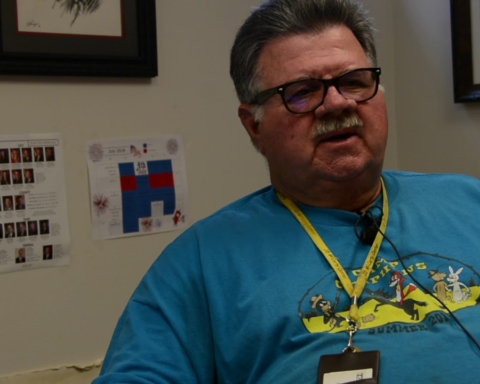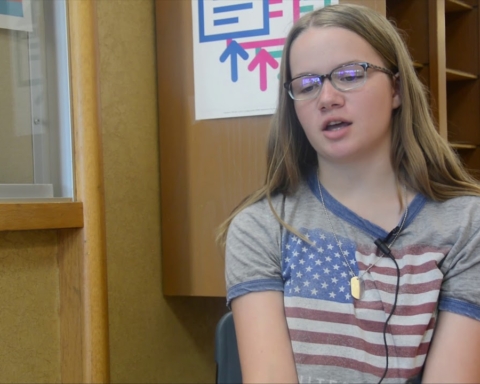Stacy Bruce sat in her office in front of a poster that read “Life doesn’t have to be perfect to be beautiful.”
Though the inspirational quotes surrounding her seemed simple, they set the tone for her leadership of Bridges, an organization that houses, feeds and encourages teenagers in Norman in difficult situations.
The nonprofit was established in 2000 and steadily grew, introducing a solution to an epidemic many Norman residents didn’t know existed – the number of homeless students enrolled in both Norman high schools.
Bruce said her experiences at Bridges since 2016 have changed her perspective about what’s happening in her city.
“It’s opened my eyes and my children’s eyes to the world outside of ‘population me.’ Population me is when you only surround yourself with people like you or the people you hang out with,” she said.

Before she took the job at Bridges, Bruce said 20 years of working at one place, driving the same route to work every day at the Cleveland County YMCA, sheltered her from problems that were right under her nose.
“I can tell you the route that I drove,” she said. “It was barely three miles from my house to the YMCA … and I didn’t see any homeless high school students in any of those streets. So in my mind, we didn’t have a high school homeless problem.”
Norman is not unique in the number of high schoolers in family crisis, Bruce said. The number of teens dealing with homelessness is growing at an exponential rate and for a variety of reasons.
However, high school students who are homeless are often stigmatized because society often assumes the causes are either crime or teen pregnancy, she said.
This is not true.
Bruce said many children who live at Bridges are there because of incarcerated parents, death of parents or drug abuse and mental illness in their homes.
Maddison Bruer, a George Washington University graduate and current businesswoman, was a bright high schooler who always excelled in school. When she experienced a family trauma at age 14, she and a friend moved into an apartment.
Although the living situation was better than the conflict at home, the two soon decided they were too young to support themselves. Bruer’s school counselor recommended the Bridges program, and soon after, she moved into Bridges housing.
The move allowed Bruer to continue her studies at Norman High School.
“Bridges offered me the stability that I needed to keep going to school in Norman,” Bruer said. “School was the only thing I had in my life that I really thrived in and enjoyed. They knew the importance in that and emphasized education. It was the perfect place.”
The way Bridges prioritizes education made it unique, Bruer said. That prioritization of education also inspired Bruce to take the position at Bridges.
“I don’t really know how to break the generational poverty cycle without including education,” Bruce said.
Because of Bridges’ emphasis on education when sheltering students, 100 percent of the seniors residing at Bridges graduated in 2018. Bruce said this is the goal, and it makes her happy to be able to give these students opportunities to grow.
She credits these successes to the determined students and her passionate colleagues.
The program has proven successful in Norman. Bridges currently is full and has a waiting list of students hoping to be placed there.
Bruce said she hopes Bridges has opened people’s eyes to a problem they may not have known about in a population that may be harshly and unfairly judged.
“Just because somebody is in a situation, I wish people wouldn’t assume the worst,” Bruce said. “I wish as a society, as a community, I wish I didn’t have students that thought, ‘We think people think we’re bad kids,’” Bruce said.





